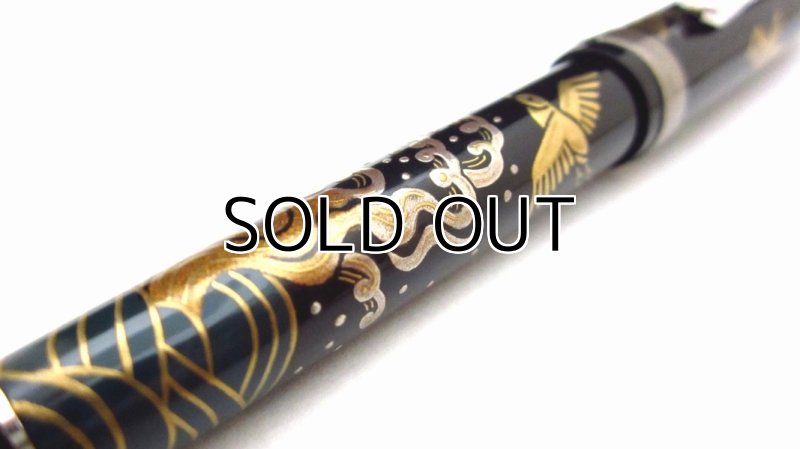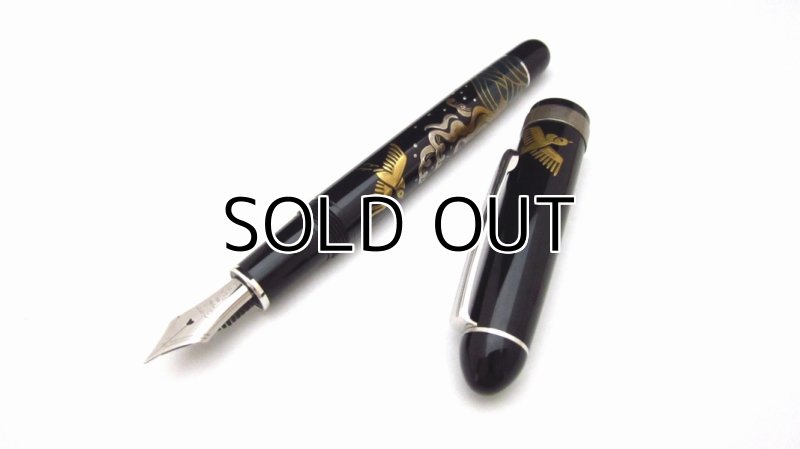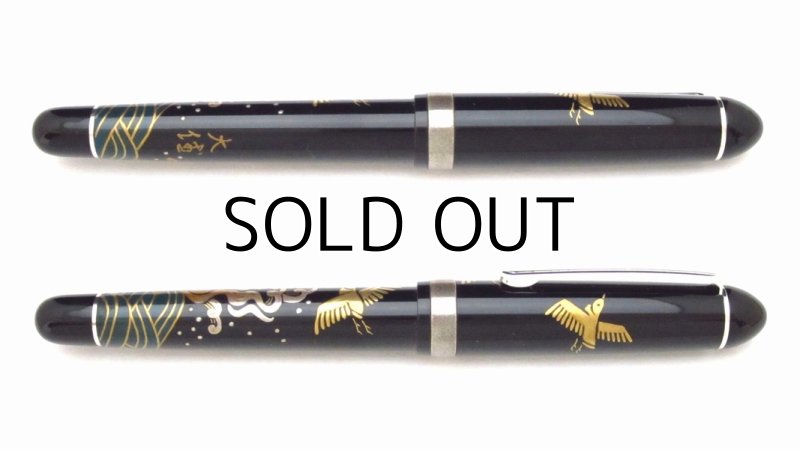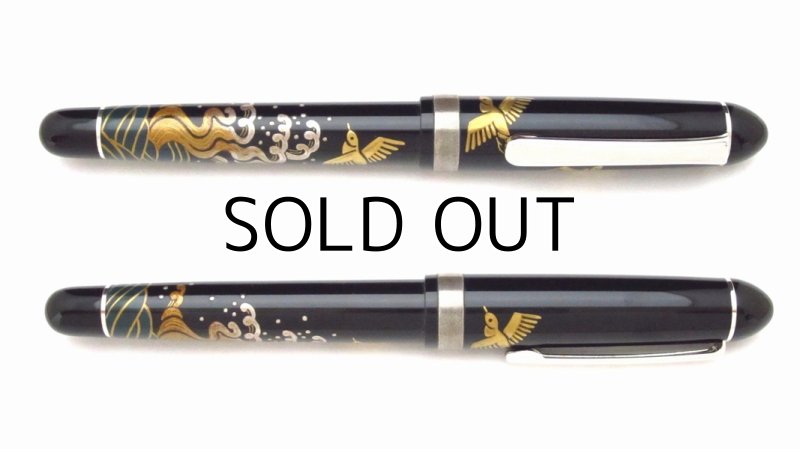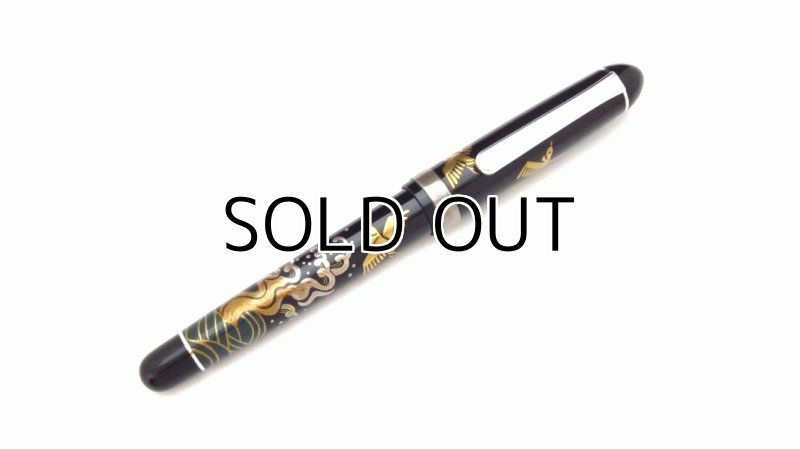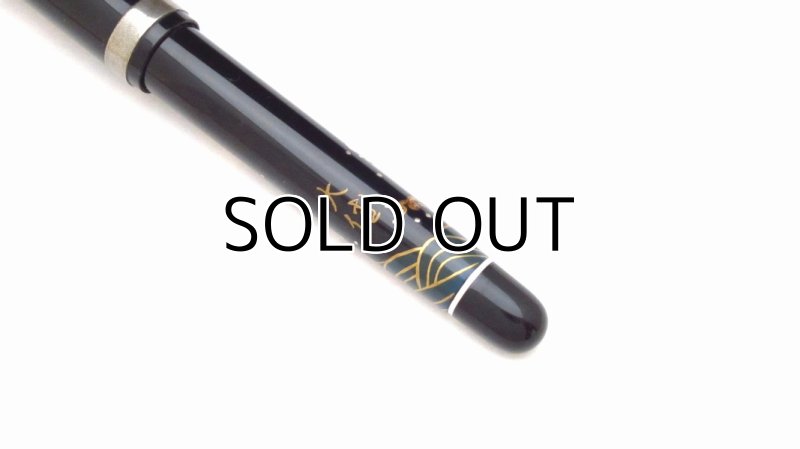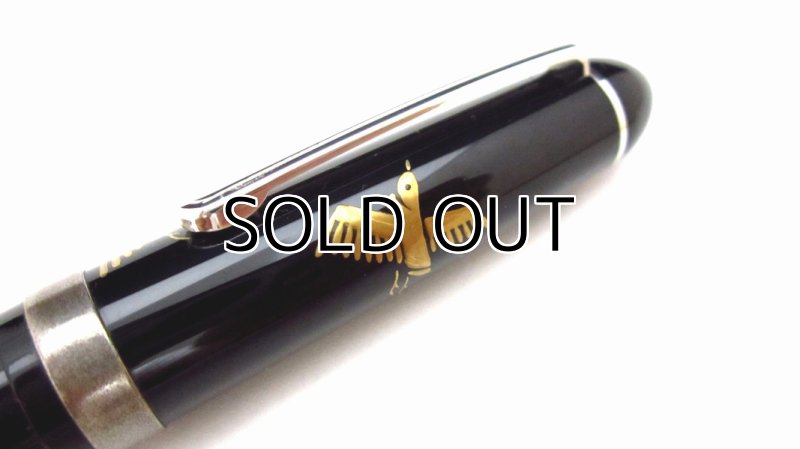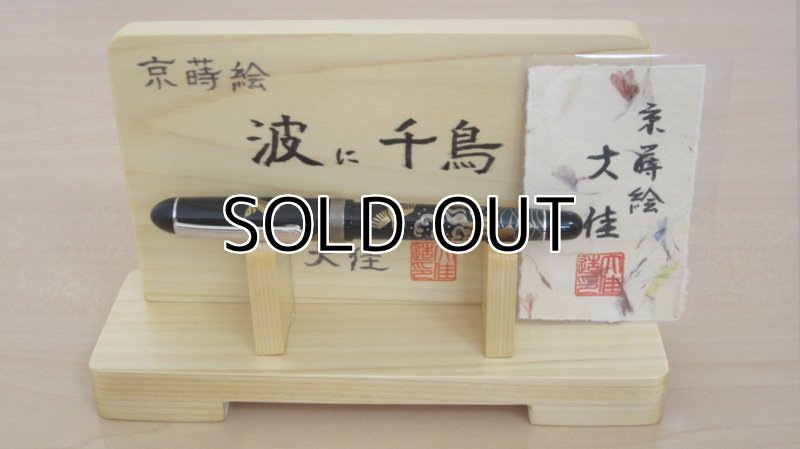AGJ Original Maki-e Fountain Pen #07 "Plover Wave and Chidori" Platinum Sparkling Togidashi Taka Maki-e Kyoto Japan Wa
AGJ Original Maki-e Fountain Pen #07 "Plover Wave and Chidori" Platinum Sparkling Togidashi Taka Maki-e Kyoto Japan Wa
Please contact us from here for the price.
Item Description
This Authentic Goods from Japan's Original Maki-e (makie) Platinum Fountain pen is made by famous Kyoto Maki-e Artisan “Daikai”.
This pen is only one in the world. You can not find it anywhere.
Kyoto Maki-e is the best known Maki-e technique in Japan.
This is the original maki-e fountain pen based on platinum fountain pen.
[Description]
Name: Plover (Wave and Chidori) #7 (Platinum Original)
Maki-e Artist: DAIKAI
Technique: Togidashi-Taka Maki-e
Origin: Kyoto, Japan
Nib: 14K Gold Rhodium
Nib size: Broad or Fine nib
Size: 14.5mm(Dia.) x 136.5mm
Shipping: FREE SHIPPING!
Techniques:
1. Plover : Gold tsukegaki maki-e
1) Apply layers of urushi , infiltrate 24 karat gold
2) Paint bird eyes with black-urushi
2. Upper Wave: Silver tsukegaki maki-e
Apply urushi, sprinkle silver powder, cover with raw urushi, polish with charcoal
3. Below waves: Gold tsukegaki maki-e
Apply urushi, sprinkle gold nashiji powder, dry, cover with nashiji-urushi, polish with charcoal
Ring part on each fountain pens
1. Applying black-urushi, dry and apply black-urushi again, dry and apply black-urushi once again.
2. Sprinkle gold power
3. Cover with raw-urushi
4. Polish with charcoal
[DAIKAI's Career]
Urushi Lacquer Master : Daikai Uehara’s Career
Year 1950 Born in Kyoto
His father, uncle, grand father and grand-grand father were Urushi Lacquer masters too.
1969 Another Urushi artist“ Masakichi Shima” started teaching Daikai.
1976 Daikai began succeeding to inherit the style of Kyo makie(Maki-e).
1985 Won the Kyoto Chamber of Commerce Award at Kyoto Lacquerware exhibition.
1986 Held Urushi Lacquer exhibition at Kyoto Takashimaya(the largest department store in Japan).
1990 Exhibited at the Arts and Crafts in kyoto.
1991 Became a technical lecturer for the artists at the traditional industry at Kyoto.
1994 Opened his Kyoto Urushi lacquer school.
1995 Invited to display his works at INFA 1995 in Hannover, Germany.
1997 Won the award at the industrial techniques for the crafts in Kyoto.
1999 Held the first Kyoto Urushi lacquer school’s exhibition at Ko-dai temple, Kyoto.
2001 He has held the traditional crafts exhibition every year since 1999.
2008 Held Amber Maki-e and Lacquer works exhibition at Sogo department store.
2009 Held Kyoto Urushi Lacquer exhibition at Takashimaya in Namba, Osaka.
He lives in Kyoto now and teaches many Maki-e artisans Kyoto-Makie technique.
This pen is only one in the world. You can not find it anywhere.
Kyoto Maki-e is the best known Maki-e technique in Japan.
This is the original maki-e fountain pen based on platinum fountain pen.
[Description]
Name: Plover (Wave and Chidori) #7 (Platinum Original)
Maki-e Artist: DAIKAI
Technique: Togidashi-Taka Maki-e
Origin: Kyoto, Japan
Nib: 14K Gold Rhodium
Nib size: Broad or Fine nib
Size: 14.5mm(Dia.) x 136.5mm
Shipping: FREE SHIPPING!
Techniques:
1. Plover : Gold tsukegaki maki-e
1) Apply layers of urushi , infiltrate 24 karat gold
2) Paint bird eyes with black-urushi
2. Upper Wave: Silver tsukegaki maki-e
Apply urushi, sprinkle silver powder, cover with raw urushi, polish with charcoal
3. Below waves: Gold tsukegaki maki-e
Apply urushi, sprinkle gold nashiji powder, dry, cover with nashiji-urushi, polish with charcoal
Ring part on each fountain pens
1. Applying black-urushi, dry and apply black-urushi again, dry and apply black-urushi once again.
2. Sprinkle gold power
3. Cover with raw-urushi
4. Polish with charcoal
[DAIKAI's Career]
Urushi Lacquer Master : Daikai Uehara’s Career
Year 1950 Born in Kyoto
His father, uncle, grand father and grand-grand father were Urushi Lacquer masters too.
1969 Another Urushi artist“ Masakichi Shima” started teaching Daikai.
1976 Daikai began succeeding to inherit the style of Kyo makie(Maki-e).
1985 Won the Kyoto Chamber of Commerce Award at Kyoto Lacquerware exhibition.
1986 Held Urushi Lacquer exhibition at Kyoto Takashimaya(the largest department store in Japan).
1990 Exhibited at the Arts and Crafts in kyoto.
1991 Became a technical lecturer for the artists at the traditional industry at Kyoto.
1994 Opened his Kyoto Urushi lacquer school.
1995 Invited to display his works at INFA 1995 in Hannover, Germany.
1997 Won the award at the industrial techniques for the crafts in Kyoto.
1999 Held the first Kyoto Urushi lacquer school’s exhibition at Ko-dai temple, Kyoto.
2001 He has held the traditional crafts exhibition every year since 1999.
2008 Held Amber Maki-e and Lacquer works exhibition at Sogo department store.
2009 Held Kyoto Urushi Lacquer exhibition at Takashimaya in Namba, Osaka.
He lives in Kyoto now and teaches many Maki-e artisans Kyoto-Makie technique.
